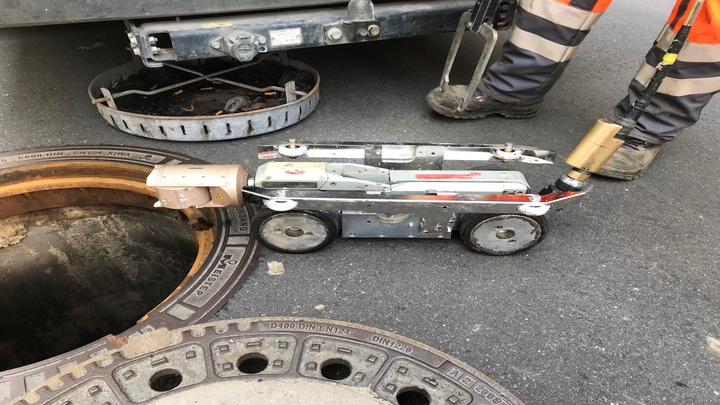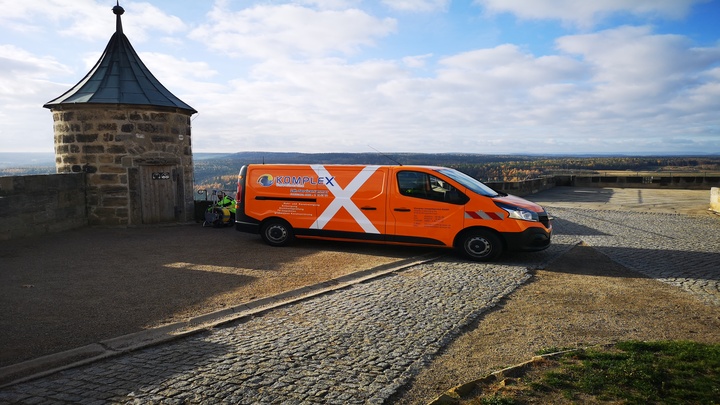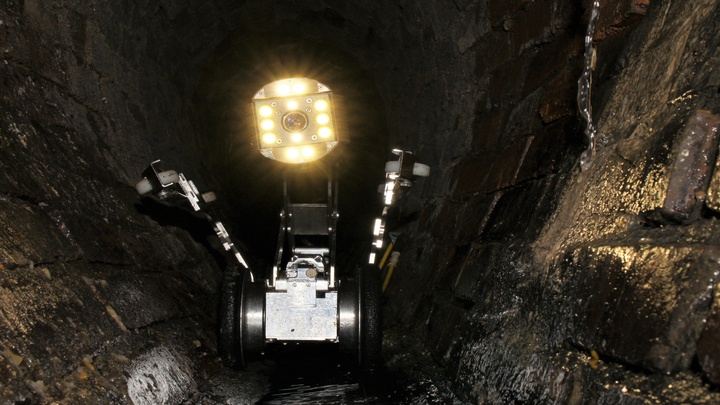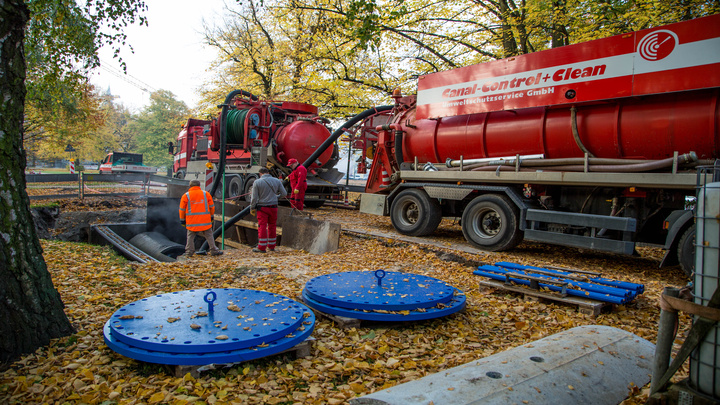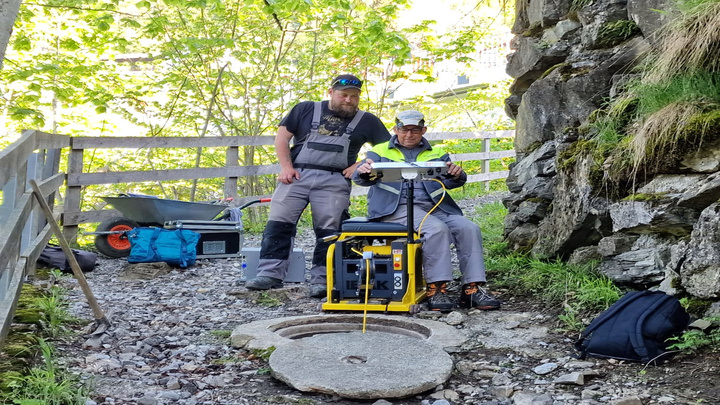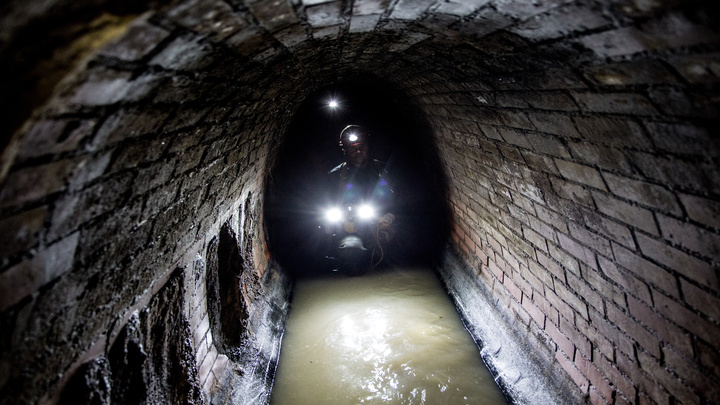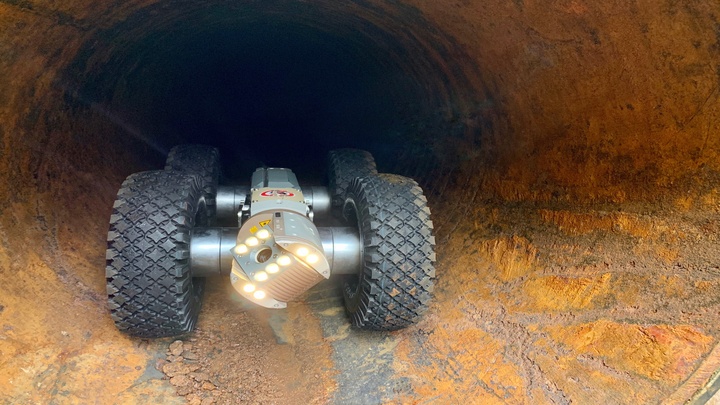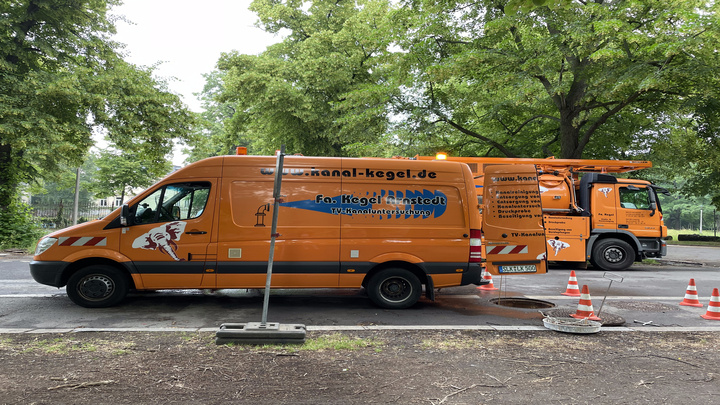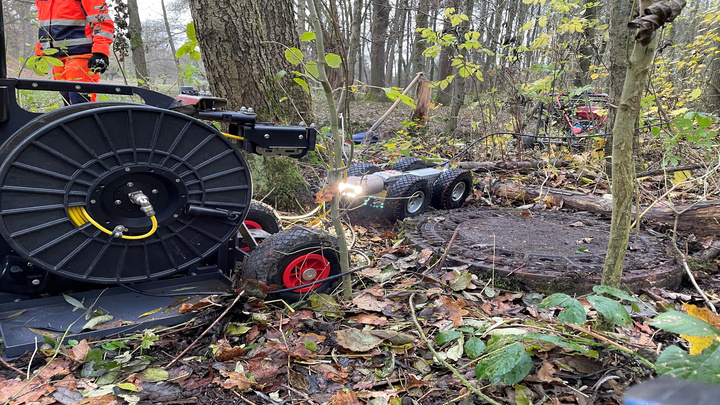Full HD: The "Game-Changer" turns 10 years old
Challenge
Fibre optic cables (FO) represent a milestone in the transmission of data of any kind. This also applies to the data collected in the sewer industry, the inspection recordings. Why? Fibre optics are capable of transmitting information in the form of light signals at high speed over long distances without loss and in real time. With these properties, they far surpass copper cables in terms of bandwidth and bridgeable distances.
This transmission technology has gained acceptance at a rapid pace since the first fibre optic cables were produced in 1970. From 1973, fibre optic cables and light sources were available for commercial use and the triumphant advance of fibre optic technology began. Today, fibre optics span the earth and form the backbone of global communications and data transmission.
Solution
IBAK has mastered fibre optic technology since the introduction of the PANORAMO main sewer camera in 2002. Since there is no length-dependent attenuation, IBAK can provide full image quality in real time, uncompressed, with this form of transmission. The technology is now so advanced that modern optical fibres, such as those used by IBAK, are extremely flexible and resilient. They are also insensitive to external sources of interference: If they are integrated into live cables such as camera cables, the video signal is not affected.
Even before the "Abendschau" was broadcast in HD (2016), IBAK presented the Pegasus HD, the world's first sewer inspection system with full HD quality (2012). The Kiel-based manufacturer showed the ORION 3 HD for the inspection of laterals from DN 100 upwards for the first time at the the IFAT 2018. Today, there are HD cameras in the IBAK product portfolio for the entire range of applications. Depending on the requirements, high-resolution inspections can be carried out with the Orpheus HD from DN 150 upwards and with the Argus 6 from DN 200 upwards. Meanwhile, work is still in full swing to provide fast Internet access for all households in Germany.
Results
The Koblenz sewage department made the start
The Koblenz sewer system operators put the very first PEGASUS HD sewer TV camera into operation in 2012 and have been working exclusively with camera systems from Kiel ever since. Delivery to the Middle Rhine is now 10 years ago.
With the PEGASUS HD, operator Hans-Peter Firmenich (now retired) and his assistant Manfred Marx took the plunge with full HD format in Germany, thus setting standards: they were the first to work with a digital image that was recorded in 1920 x 1080 resolution and transmitted as an HD SDI signal via a fibre optic cable to the final output device, an HDTV monitor in 16:9 format with the identical resolution.
"The vehicle is still in service every day. And with him Carsten Herrmann," reports sewer foreman Ingo Pelkowski. "But we have also invested and will continue to do so, because technology is advancing and we want to stay on the ball," the 45-year-old continues. A PANORAMO SI 4K will be next. Two years ago, the ORPHEUS HD replaced the PEGASUS HD.
Jansen brought full HD to South Holland
"We were the first to inspect in full HD in the Netherlands. Being a pioneer was a decided competitive advantage at the time. Today, high-resolution images are taken for granted and are standard," reflects Ab Jansen, the company founder and managing director of Jansen Rioolreiniging.
The PEGASUS HD was replaced by the ARGUS 6 full HD camera after a total of 7,096 operating hours "We were very satisfied with the PEGASUS HD and the IBAK service all these years. We did not want to do without the brilliant, interference-free image after using it for the first time. It was clear that its successor would again be a full HD camera from IBAK," says the entrepreneur. Like the PEGASUS HD, Jansen has also again purchased the explosion-proof version of the ARGUS 6, so that he can use it to handle his orders in petrochemical industrial plants.
And what's next?
HD or not, that has no longer been the question for a long time. Data traffic is continuously increasing due to ever more complex and more data-intensive applications, both in the private sector and in industry. Sewer data is received from the inspection vehicle and after work has finished, the inspection data is transferred directly from the vehicle to the people who need it and further process it. The digital data loop will completely replace the error-prone handling of manual plans and, more significantly, enable new applications. Fibre optics are considered to be a future-proof technology that can best meet these requirements, even with further increasing data flows. IBAK already realised this 20 years ago. No other transmission medium offers higher bandwidth reserves. These are crucial for the speed of lossless data transmission.
So what about tomorrow? IBAK is once again paving the way for the establishment of new techniques and methods that optimize the processes in the sewer industry. With IBAK ArtIST (Artificial Intelligence Software Tool), the company provides a cloud-based extension of IBAK's sewer analysis software IKAS evolution for automatic condition detection in inspection films. With the ArtIST service, users benefit from an additional tool to increase their work performance with artificial intelligence (AI) methods. So tomorrrow the future can come.
Company introductions

Stadtentwässerung Koblenz - the city of Koblenz sewage department - is the largest municipal enterprise of the city at the confluence of the Rhine and Moselle rivers and has a sewer system around 550 kilometres long. The nominal diameters range from classic DN 150 to the absolutely metropolitan dimension of DN 3500. Since 2001, the enterprise has ensured the reliable collection, discharge and treatment of the wastewater produced.

Jansen Rioolreiniging B.V. in Sliedrecht (Rotterdam region) was founded in 1969 and has been family-run ever since. Services include cleaning, inspection, rehabilitation and maintenance of sewers.




